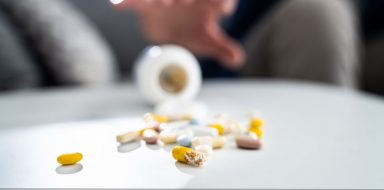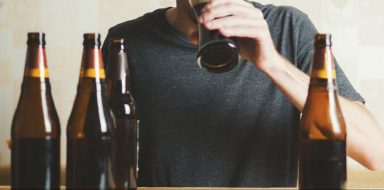How to Treat Lice in Children
When having head lice, kids are often sent home, and this can be an unpleasant experience. Here you will learn how to treat lice and all the different methods that can be used.
A Clinical Problem
Head lice infestation can affect people of all ages but is frequently seen in children ages three to 12. Although this problem is harmless, it is a common occurrence worldwide.
A review of 55 studies about pediculosis capitis (the scientific name of head louse) shows that it is a widespread condition throughout the world. Also, some studies emphasize that low socioeconomic status is not entirely the reason for obtaining head lice infestation. This condition commonly affects girls and women, and this could mean these individuals may miss a number of school days or work.
The Culprit
An adult louse is the size of a sesame seed. The color may vary but usually it is pale gray. According to a clinical report, the female louse lays eggs, commonly called nits, as much as 10 counts per day.
The eggs are attached to the hair shaft close to the scalp of the infected person. Some nits may be found along the hairline. The eggs hatch within 10 to 14 days, then the nymphs hatch and grow within 12 days. Mating will occur and females will then lay eggs again. This cycle occurs every three weeks if there is no treatment.
Head Lice Symptoms
Head lice is not a carrier of any disease, so there is no reason to worry about having an associated serious illness. The main symptom of head lice infestation is itchiness. This may be due to the saliva of head lice left after feeding on the person's scalp. They feed through taking minute amounts of blood from the scalp.
Possible Secondary Bacterial Infection
Scratching of head due to itchy irritation is not uncommon for people affected by head lice. If this scratching became so intense, leading to cuts or wounds, this condition may lead to a bacterial skin infection. If you notice any bumps or discharge, you may want to consult with your doctor to have it properly assessed.
How to Diagnose Head Lice
According to the American Academy of Pediatrics (AAP), “The gold standard for diagnosing head lice is to find a live louse on the head.” This is not easy because the lice crawl around the hair every minute. The ones easier to find are the tiny eggs, usually seen at the nape of the neck or at the area near the ears.
Having been diagnosed with head lice infestation may induce social stress in children, as well as in parents. With that in mind, it is best to find treatments and prevention methods.
Therapeutic Practices
There are multiple treatment options you can use for head lice infestation. All of them have shown effectiveness in a number of scientific studies.
Topical Insecticides
Pyrethrin and Piperonyl Butoxide
Pyrethrin and piperonyl butoxide are natural extracts from the flowering plant called chrysanthemum. This formulation is toxic to lice but not to humans. It does not kill the eggs though, so a second treatment is necessary to kill those new lice from hatched eggs that remained after the first treatment.
Pyrethrin and piperonyl butoxide is sold in the form of shampoo and must be left on the head for 10 minutes. It is highly suggested to rinse the head over the sink instead of doing it during a shower to minimize the exposure of the product to other parts of the skin. Also, cold water is preferable to use for rinse. Take note that if the person is allergic to chrysanthemum, this should not be used.
There are many causes of childhood obesity, and it is treatable. From risk factors to prevention methods, here's all you need to know.
Permethrin
AAP mentioned that, “This is the recommended treatment of choice for head lice.” Allergic reactions to plants is not an issue with its use. Just like the previous medication, it is also in the form of shampoo and to be rinsed after 10 minutes. Reapplication is suggested if lice are still detected seven to 10 days later.
Malathion
Malathion is an organophosphate that requires a prescription if you intend to buy it. This product comes in the form of a lotion and is applied onto the hair followed by airdrying. After eight to 12 hours, it should be washed off. It is flammable because it contains a high amount of alcohol. Extreme caution should be exercised when using malathion.
Natural Products
Anise essential oil, ylang-ylang and coconut oils are widely used for the treatment of head lice. An investigation stated that these are, "at least as effective as the permethrin product."
Manual Removal
Take note that the topical insecticides listed above do not kill the eggs. You may want to supplement your management with manual removal of the nits by using a fine-toothed comb. This suggestion is studied as well and revealed to be effective in damaging the eggs.
Wetting the hair prior to combing or brushing is also recommended. Wet hair makes the lice unable to crawl fast. Combing should be done until there are no more lice coming down from the hair. This procedure must be 15 to 30 minutes per session and repeated once every three to four days for several weeks.
Head Lice Awareness
To prevent transmission, head-to-head contact should be avoided in the school and even in the household. Children should be instructed not to share combs, hairbrushes, as well as hats with their friends. If one of the family members have been diagnosed to have head lice infestation, the rest of the household members should be checked for head lice as well.
Cleaning of personal items of the infected person, such as hairbrush, bedding, clothing, or anything that has come into contact with him or her, is important. Washing the items with a water temperature of at least 55C will destroy stray lice or nits. If an item is not washable, place it in a plastic bag for two weeks, the surviving nits will hatch and the nymphs will die due to lack of a host for feeding.







